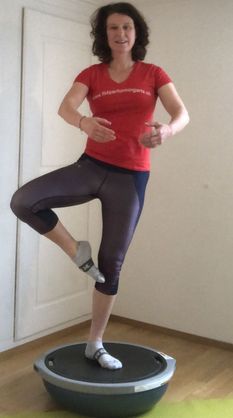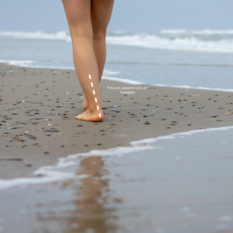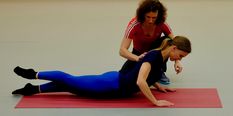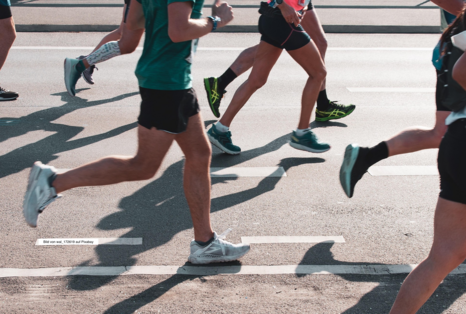Well-balanced prevention programs for professional dancers:
Dancers are high-specialised athletes. The demands on body and mind are immense and the daily dance training and rehearsals do only cover part of their physical needs. Prevention programs at fit4performingarts teach active exercises to prepare the dancer optimally for the upcoming dance season; it creates supplemental exercises to prevent injuries. At fit4performingarts you will learn how to optimise your strength of the lower and upper body as well as the core. Proprioceptive training will enhance your stability and balancing ability. Leg alignment will be taught to enhance your stability during take-off and landing of jumps. Exercises for the shoulder girdle will improve your port de bras as well as prepare your body for better lifts. Get in contact with me for your individual coaching appointment
Free Zoom initial Consultation

In a free 20-minute Zoom call, we will discuss your goals and my approach. We'll determine whether a further collaboration makes sense and how we can proceed together. Book your free 20-minute Zoom call here!

Booking Anamnesis and tests:
A test battery provides feedback on your current physical condition. The evaluation of the tests is important for discussing the further training plan.

Dance-specific strength training:
- To improve your turn-out as well as your extensions à la seconde strength training of the external hip rotators, the hip flexors and the hip abductors is inevitable.
- As a preparation for jumps and for injury prevention strength endurance of the calf muscles is highly important.
- For easier lifts in Duets or Trios and strength saving floor sequences in contemporary dane, stability and strength of the shoulder girdle is rather helpful.
- Before starting a plyometric jump training, enough lower body strength is mandatory as well as a good alignment of the lower limbs and good core strength.
Learn with fit4performingarts which muscles should be strengthened and how. Get in contact

Plyometric Jump Training:
To improve your jump ability in Jetés or other jumps during the Grand Allegro as well as to reduce injuries of the lower limbs a progressive plyometric jump training is highly recommended. Studies from sports and dance account of improvements of speed and power, better vertical jump height, as well as improved Jeté lengths. Applying such a training method may enhance your speed and force, vertical and horizontal jump height, reduce the ground contact time, the reaction index, the flight time. It is essential to follow a progressive supervised protocol, to check the quality of the jumps before attacking the next step. Contact me here for your personal jump training program.

Proprioceptive Training:
Propcioceptive Training trains the perception of joint angle, muscle tension, location and alignment of the body in space; moreover it helps the body to percieve movement directions. In a well-balanced and fit body this perception functions automatically and can be recalled within milliseconds. In a state of fatigue or lack of concentration this ability decreases. Especially the lower limbs rely on this reaction mechanism during balancing tasks, take-off and landing of jumps to guarantee safety and no injury. For this reason it is worthwhile changing the focus, input during relevé or penché from a stable to an unstable surface. Even jumplandings and adio sequences may be trained on unstable ground once in a while. Book here your individual procpriocetion training

Leg Alignment:
During plié, relevé, take-off and landing of jumps a good leg alignment helps significantly to reduce lower limb injuries. Perception training as well as specific strength training of key muscles may improve your leg alignment and thus improve your performance. Book here your appointment for your individual leg alignment program.

The Essence of training your core:
To hold pirouttes and jumps effortlessly, core stability is central. Besides the global core muscles the deeper local core muscles need to be addressed specifically. These can be trained with Pilates exercises or any other global core exercise. Book your next appointment for a stronger core.

Cardio-vascular Training
In general, the higher the aerobic capacity, the longer dancers can train in the moderate intensity range without risking injury.
It is important to build a foundation. This is referred to as basic endurance I: At a low intensity between 60-75% of the maximum heart rate, training is aerobic, meaning there is always enough oxygen available. Typically, this moderate, long-duration activity is performed between 40 and 180 minutes. Energy production mainly comes from the burning of fats. During this session, you should still be able to chat comfortably with your training partner. The benefits of basic endurance training are as follows: improvement of the cardiovascular system, reduction of stress levels in the body, improved oxygen uptake, and better metabolism. A solid aerobic foundation generally provides more maximal energy, even during anaerobic activities. It helps recover faster from anaerobic activities and produces more adenosine triphosphate (ATP), which is more limited in anaerobic energy production (Wyon, 2005).
Additionally, it is worthwhile to invest in basic endurance 2 (stamina).
Basic endurance 2 is characterized by an intensity of 70-90% of the maximum heart rate. The main energy sources are fats and stored carbohydrates. This means the body incurs an oxygen debt (anaerobic training) due to the higher heart rate, leading to the formation of lactate, which can be quickly broken down by the body. These two areas are often combined. To reach this range, tempo runs and interval training are recommended. It is a training below the anaerobic threshold, thus training in the anaerobic-aerobic zone.
Your basic endurance can be improved through the following endurance sports: cycling, jogging, swimming, elliptical trainer, stationary bike, and rowing.


